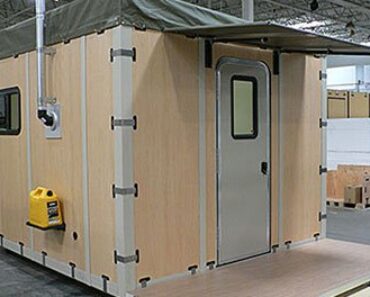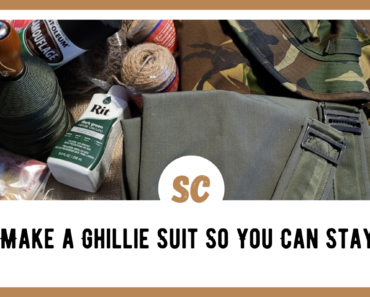One of the fun parts of being a prepper is making your own survival gear, gadgets and home projects. For those of us who consider ourselves do-it-yourselfers, there’s a real joy in making things; being able to make things that can help us survive also provides a very real satisfaction. Making knives is especially satisfying, as well as being a useful skill, providing a useful survival tool.
As we all know, a knife is the single most important survival tool. We all strive to find that one knife, which is the perfect combination and can be used for all our survival needs. In reality, no such knife exists, mostly because different blade shapes and sizes are useful for different things. Chefs don’t have just one kitchen knife. Following that example, it really makes more sense to own several knives which are created specifically for each purpose that we might need, along with a general-purpose knife or two.
Buying all those knives can be rather expensive, especially if we’re going to buy quality knives; and it really doesn’t make any sense to buy knives that aren’t quality. It is actually cheaper to make them yourself, which also gives you the opportunity to experiment with knife design, as well as the bragging rights to say that you made it yourself. So, the question is, how do you make a knife?
It Starts with an Idea
Before even looking for metal to use, you want to sit down and draw out the shape of the knife you want to create. Actually, you want to draw out a bunch of knives, experimenting with design, until you come up with something you really want to make. Your pattern can be on paper, but I like to put them on thicker cover stock. It’s easier to trace around the cover stock, than to trace around ordinary paper.
One thing you definitely want to do is to make your design a full tang knife blade. The metal from the blade needs to extend all the way though the handle to give it strength and keep it from breaking off. This does not mean that the tang has to extend all the way to the outer edges of the handle, but that’s what’s most commonly done.
You’ll Need Some Metal
Making any knife starts out with a metal blank. Blacksmiths are able to forge those blanks and factories start out with blanks they get from the foundry. You and I don’t have those options, although it is possible to buy knife blanks online. It’s even possible to buy Damascus steel knife blanks. If you’re looking for a pretty knife, that’s something you might want to try; but if you’re looking for functional, you’re better off with other steel. The Damasus steel they sell today is more decorative, than the stuff of fame and legend.
Besides buying knife blanks, there are a few really good sources to consider. You want a good tool steel or spring steel to work with. These can be found either in old blacksmith’s rasps, leaf springs from cars or old saw blades, such as circular saw blades. The saw blades are only useful for thin blades, as they aren’t very thick; but there are some places where a thin knife blade is really useful.
It will be necessary to cut a blank out of the available metal. This is usually best in two stages. The first stage is a rough-cut, to get a piece of metal that’s roughly the right size. The pattern can then be traced onto that, so that the knife’s outline can be cut.
So, how do you cut the steel to make a knife out of? If you have a band saw, don’t try it. Even the best band saw isn’t going to work. You’ll need to use abrasive cutting, specifically abrasive cutting with a blade or grinder wheel that’s made for cutting metal. Most DIY knife makers use a right-angle grinder, although a cut-off-saw is easier for a lot of the cuts. Cut-off saws are available for considerably lower cost than miter saws, because they are less complicated.
One thing that’s extremely critical about making any knife is to avoid overheating the metal. As long as the metal doesn’t overheat, it retains its temper. But once it overheats, it will need to be tempered again. If the metal turns red, it’s too hot. So, the secret is to cool the metal by quenching it in water or oil, as soon as it starts turning red, before it reaches that point. As long as you consistently quench the metal while working on the knife, you won’t need to re-temper it.
Grinding the Blade Profile
Once the knife blank is roughly cut, transfer the pattern to the blank. This can be done with a marker or scribe, but it may be hard to see while you’re working on the knife. Your best bet is to use Steel Blue Layout fluid, which can be purchased from any industrial supply, Amazon.com or Ebay.com. Brush it onto the metal and allow it to dry (it’s fast drying). Once it is dry, lay the pattern on the blank and go around it with a scribe, making as bold a line as you can.
It’s easier to grind the outline first, before working on tapering the blade. This can either be done on a bench grinder or belt sander. While people who make knives all the time use some pretty fancy belt sanders, with some pretty fancy prices, I’ve successfully ground knives on a 1” wide, $49.95 belt sander from Harbor Freight (actually, I think it was $39.95 back when I bought it).
Grinding the Blade
Tapering the blade is the touchiest part of the operation. It can either be done on a belt sander or bench grinder. In either case, you need to verify that the table or stage is exactly perpendicular to the cutting surface, before starting. Use a good square for this, making whatever adjustments are necessary and locking the table or stage in place.
The basic difference between using a belt sander and using a bench grinder is the blade profile you end up with. A belt sander will provide a flat grind, while a bench grinder will provide a hollow grind. I’ve done both, and it is harder to do the hollow grind on the bench grinder.
Start by marking the midpoint of the material thickness, providing yourself a guideline to work towards. You’ll also want to mark how high up the sides of the blade you’re going to grind, as well as how far back from the point. Once again, it’s best to do all this marking with the Steel Blue Layout Fluid for maximum visibility.
Most knifes have a 17-to-20-degree bevel, between the two sides. If a sharper bevel is desired, the knife is usually only beveled on one side. A 20-degree bevel means 10-degrees on each side. So, a support block will be needed that will hold the blade at this angle. This can be made of scrap wood, preferably a hardwood. Don’t try holding the knife by hand, as it will be all but impossible to hold it at a consistent angle.
To use the knife support, attach the blank to it with double-sided masking tape, covering as much of the knife blank with tape as possible. The heat from griding will soften the tape’s adhesive, hence the need to use a lot of tape. Lay the base of the support on the stage or table and move the blank up to make contact with the belt or wheel. Then move it back and forth, grinding the blade.
The real key here is how you move the knife blank. You want to be grinding the entire cutting area of the blade on each pass, not working on one area and then moving to the next. Working on the entire side at the same time is necessary to create an even bevel along the blade. It also helps in preventing overheating of the metal, as the various points along the blade have time to cool during each pass. Stop often and quench the blade to keep it from overheating.
You aren’t actually going to be grinding all the way to the center line, but stopping just short of it. The final grind will be done by hand on a coarse whetstone. However, the closer you can get to that center line, the less you’ll have to grind in your micro-bevel.
You can either do the hand grinding and sharpening at this point, or wait until the grips are mounted to the blade.
Making the Grips
Knife grips or scales can be made from a variety of materials, but they are most commonly made from wood on homemade knives. Use the tang of the handle itself as a pattern for the scales, as your final knife blade might not match your original pattern exactly. Cut the handles slightly oversize, so that final shaping can be done after they are mounted to the blade, ensuring a smooth contoured surface.
The mating sides of the scales must sit flush on the sides of the blade. Before mounting them, check their fit and plane or sand them as necessary. To attach the scales to the blade, two to three holes will need to be drilled through them and the knife blade’s tang. These need to be perfectly aligned and sized for drive pins (preferably brass, but other materials can be used) to hold them together.
It will likely be extremely difficult to drill these holes through the knife blade, as the metal is hardened. Use a drill press, if available. That will help prevent bit wandering and provide you with more leverage. Take your time, working up from a smaller drill bit and using oil to lubricate and cool it.
Once the holes are drilled, the drive pins can be used to attach the scales to the sides of the knife blade. In most cases, you’ll want to use some adhesive as well, such as epoxy. Allow the adhesive to fully cure, before cutting off any extra pin length and beginning to shape the knife handle.
Depending on the design of the handle, it can be shaped with a router, mounted in a table, a belt sander or a drum sander. The most important thing is to make it smooth and comfortable in your hand, while removing any burrs that might scratch or cut you. Sand everything smooth and finish the wood with either varnish or clear epoxy.




























